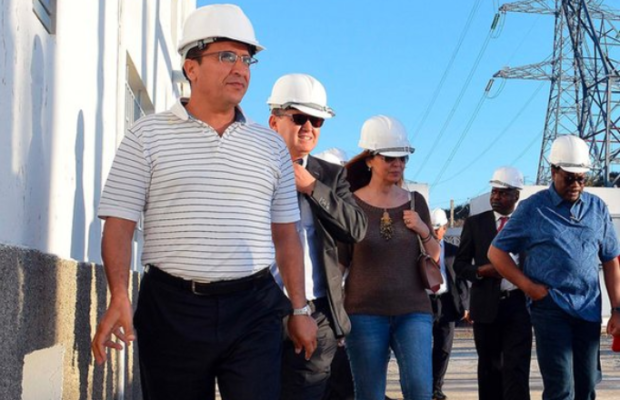Oil and Gas Republic
Nestled on the steep slopes of the northernmost part of Morocco facing Spain, is the Melloussa interconnection station, which provides 15% of Morocco’s electricity production.
The plant, located close to Tangier, connects to Spain, through a 27-kilometre undersea cable, has transformed the country’s national power supply.
During an official visit to Morocco, July 28-30, the president of the African Development Bank Group, Akinwumi Adesina, paid a visit to the station, which was one of the first to link the north African nation to Europe and Northwest Africa. Melloussa’ s first power interconnection became operational in 1997 via a link, reinforced with new cables in 2006, doubling transmission capacity from 700 to 1,400 megawatts. A third 700-megawatt line, has further enhanced the frequency and voltage stability of the Moroccan electrical grid.
A pioneer in undersea connections between two continents, Morocco also leads the way in power connectivity within the North Africa region. Moroccan, Algerian and Tunisian networks were interconnected in 1988. In June 2010, Morocco, Tunisia and Algeria adopted an action plan for 2010‑2015, underscoring their intention to create an electricity market in North-West Africa with the objective of integration the European market.
A third link, which became operational in 2010 between Algeria and Morocco, has enabled the Kingdom to benefit from an additional interconnection of 400 kilovolts and underlined Morocco’s resolve to pursue a green energy agenda with low fossil fuel emissions.
Bank financing boosts Morocco’s power transformation
On 3 December 2009, the Bank approved a loan of €109.82 million to Morocco’s National Electricity Agency (ONE) for the development of the electricity transmission and distribution network.
The goal of this project, co-financed by the French Agency for Development, the European Investment Bank, and the World Bank, was to optimize the quality of services provided to all of ONE’s domestic and industrial customers and distribution authorities. In addition, it was to improve and secure the electricity supply and the reliability of the network through increasing the transmission capacity of the lines. This project will also facilitate overall completion of the Global Rural Electrification Programme (PERG).
The rapid growth in demand for electricity in Morocco (6 to 8% per year on average) and the expansion of the networks to serve the entire country led to the saturation of the electricity transmission grid, causing voltage drops, but this is now a thing of the past, thanks to the installations.
The reduction in energy losses between production sites and the distribution network (reduced to 3.5% at the end of the project, against 4.7% in 2008), is an additional benefit that will also help prevent 180,000 tonnes of CO2 emissions per year.
The Bank’s financing of this project forms part of its continuing operations to support the Moroccan energy sector.
The African Development Bank Group began operations in Morocco in 1970. From its first financial disbursement in 1978, to the Kingdom’s water and sanitation sector, the Bank as of September 2017, has an active portfolio of 31 programmes and projects valued at nearly US$2.8 billion.
This investment provides ongoing support to Morocco, fostering the environment for strong, stable and inclusive growth under its High 5 priorities: ‘Feed Africa’, ‘Light and power Africa’, ‘Industrialize Africa’, ‘Integrate Africa’ and ‘Improve the quality of life for the people of Africa’.
The Bank’s portfolio in Morocco are in the sectoral domains of agriculture, transport, energy, water and sanitation, social development and multi-sector operations.








